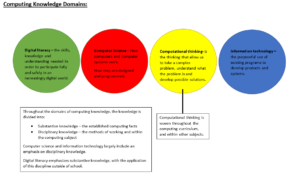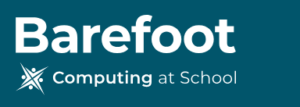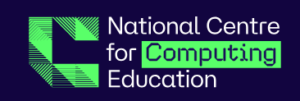COMPUTING
Our vision for Computing at Knaphill Lower School:
Our vision for computing at Bright Futures Learning Trust is based on providing all children with a knowledge- rich curriculum that equips them to confidently apply computational thinking and creativity to understand and change their future. We have designed an innovative and inspiring curriculum that guarantees every child’s computing entitlement, so that every child is taught the powerful knowledge to understand their part in creating a bright future in an ever-changing world. We believe that teaching computing is vital to develop our children’s character, as children are empowered to explore, develop their resilience, take risks, make informed choices, and communicate effectively and safely in both the online and offline world.
Keeping children safe online is fundamental. By having a robust online safety programme of study and ongoing online safety themes, that are continuously revisited, we aim to help children to be effective, discerning and safe digital citizens, who apply their values at all times. Children are taught to utilise a range of technology positively, whilst maintaining a healthy and balanced lifestyle.
All children have the right to access a challenging computing curriculum that encourages them to develop a breadth of understanding, whilst applying this knowledge to a real-life context of life today to help them understand the world they are growing up in. We have a broad curriculum that encompasses computer science, information technology and digital literacy. The core of computing is computer science, in which children are taught to become skilful computer scientists. Our curriculum ensures that pupils make informed choices to become digitally literate at a level suitable for the future workplace and as active participants in a digital world.
We see reading as a core enabler of the curriculum. In computing, children will be given the opportunity to apply their reading skills, through the application of word reading and by applying comprehension skills to digital literacy learning.
Adapting the curriculum for pupils with SEND in Computing
- Adaptive teaching takes place to meet specific needs.
- Pre-teaching when prior learning is needed before a lesson.
- For sensory or physically impaired pupils, computing learning may necessitate enlarging texts, using clear fonts, using visual overlays, or audio description of images.
- Teachers identify and break down the components of the subject curriculum into manageable chunks for pupils who find learning more difficult, particularly those with cognition and learning needs. These may be smaller ‘steps’ than those taken by other pupils to avoid overloading the working memory. Teachers may use task boards to support a sequence of instructions.
- A variety of additional scaffolds may be used in lessons, such vocabulary banks, additional visual stimuli or adult support.
Knaphill Lower School – Curriculum Drivers: Values
Throughout all curriculum subjects, children are given opportunities to apply to Knaphill Lower School values in their learning.
In computing, key values have been identified as:
- Kindness – linked to digital literacy and online communication/ relationships.
- Resilience – linked to computer science and the use of informational technology tools.
- Aspiration – as children use early computing to support their future employment.
- Curiosity – as children explore and discover.
Computing Concepts and Domains
To ensure that the most useful knowledge is selected within the Computing curriculum, the Computing Leader has used research to determine key computing concepts and domains of knowledge.

Substantive Knowledge:
Computer Science: The design of new software, the solution to computing problems and the development of different ways to use technology.
Information Technology: The design, use and understanding of hardware and software; computers and electronic systems for storing and using information.
Digital Literacy: The ability to use information and communication technologies to find, create, evaluate, and communicate information.
Computation thinking: the knowledge of logical reasoning; abstraction, through the selection of what is most important; pattern, through comparing; algorithms, through instructions and sequencing and decomposition of problems.
Disciplinary Knowledge:
Computer Science: Code Using and writing codes to produce instructions and algorithms; to solve problems; to test and use logic and sequences against inputs and outputs.
Information Technology: Being able to safely, efficiently and confidently use apps and information technology to communicate ideas. Being able to safely, efficiently and confidently find, evaluate, store, sort and use appropriate data.
Digital Literacy: Being able to safely, efficiently and confidently digitally connect with others.
Computational thinking: implement computing knowledge by applying logical reasoning, abstraction, pattern and decomposition, to complete tasks.
Knaphill Lower School Computing Curriculum:
To support the planning and teaching of the computing curriculum, Knaphill Lower School uses three carefully selected schemes.

The Barefoot Computing curriculum is used to support the development of computational thinking within the continuous provision of the Early Years Foundation Stage.

The Project Evolve resources toolkit is used the support the implementation of the 330 statements from UK Council for Internet Safety’s (UKCIS) framework “Education for a Connected World”.
Digital literacy is also enhanced by further learning is the Jigsaw PSHE scheme and regular online safety focused assemblies.

Computing lessons are planned and taught using the Teach Computing scheme as supported by the National Centre for Computing Education. The NCCE provides high quality resources, as well as support and ongoing training for both the computing leader and teachers.



